Easy Tips for Creating a Raised Bed Garden
Creating a raised bed garden can be one of the most rewarding experiences for any gardening enthusiast. It’s like building a little paradise right in your backyard where you can grow your favorite vegetables, herbs, and flowers. Imagine stepping out your door and being greeted by the vibrant colors and fresh scents of your own little Eden! But before you dive in, there are some practical tips and tricks you should know to ensure your gardening success. This article will guide you through the essential steps of building and maintaining a raised bed garden, covering everything from selecting the right location to choosing materials and plants.
Choosing the perfect spot for your raised bed garden is crucial. Think of it as picking the ideal spot for a picnic; you want to ensure it's sunny, accessible, and has good drainage. Ideally, your raised bed should receive at least 6-8 hours of sunlight each day. This is essential for most vegetables and flowers to thrive. Additionally, consider the drainage of the area. You wouldn’t want your plants sitting in water after a rainstorm, right? Look for a location that has good drainage and is also convenient for you to access for watering and harvesting. Lastly, think about accessibility. You want to be able to reach your plants easily without straining your back, so make sure your raised bed is at a comfortable height and within easy reach.
When it comes to constructing your raised bed, the materials you choose can greatly impact its durability and aesthetics. There are several options available, each with its own set of pros and cons. The most common materials include:
- Wood: A popular choice due to its natural look and ease of use.
- Metal: Offers a modern aesthetic and is highly durable.
- Composite Materials: Made from recycled materials, these are long-lasting and environmentally friendly.
Wood is the go-to material for many gardeners, but not all wood is created equal. When selecting wood for your raised bed, consider options like untreated wood, cedar, and recycled materials. Untreated wood is a safer choice for growing edible plants, but it may not last as long as treated wood. Cedar and redwood, on the other hand, are naturally resistant to decay and can add a beautiful touch to your garden.
Understanding the differences between untreated and treated wood is essential. Untreated wood is free from chemicals, making it a safer option for growing vegetables and herbs. However, it may only last a few years before it begins to rot. Treated wood, while more durable, can leach chemicals into the soil, which may not be ideal for edible plants. So, if you choose treated wood, consider lining the inside of your raised bed with plastic to create a barrier.
Cedar and redwood are fantastic choices for raised beds due to their natural resistance to insects and decay. Not only do they have a beautiful color and grain, but they can also last for decades, making them a worthwhile investment for your garden. Plus, the aroma of cedar can be quite delightful!
Metal and composite materials are gaining popularity for their unique advantages. Metal raised beds, such as those made from galvanized steel, are incredibly durable and can withstand the elements. They also provide a sleek, modern look that can enhance your garden's visual appeal. Composite materials, made from recycled plastics and wood fibers, offer the best of both worlds: they are environmentally friendly and resistant to rot and pests.
Designing your raised bed is like planning a room in your home; you want it to be functional and aesthetically pleasing. The size, shape, and layout of your raised bed can influence not only how easy it is to maintain but also how it looks in your garden. Standard dimensions for raised beds are typically 4 feet wide and up to 6 feet long, allowing easy access from both sides. However, feel free to customize the dimensions based on your available space and gardening needs.
When determining the size of your raised bed, think about accessibility and plant health. A bed that is too wide may make it difficult to reach the center, while a bed that is too narrow might not provide enough space for plants to grow. Consider creating multiple smaller beds instead of one large one to make maintenance easier.
Don’t be afraid to get creative with the shape and layout of your raised bed garden! While rectangular beds are traditional, circular or even triangular designs can add a unique touch to your garden. Think of it as adding a piece of art to your landscape—something that not only serves a purpose but also enhances the overall beauty of your outdoor space.
Choosing the right soil mix and plants is vital for a successful raised bed garden. The soil is the foundation for your plants, so it’s important to create a nutrient-rich blend that will support healthy growth. A well-balanced soil mix typically includes compost, topsoil, and other organic materials. This combination provides the necessary nutrients and drainage for your plants to thrive.
To create the perfect soil mix, consider using a ratio of 1/3 compost, 1/3 topsoil, and 1/3 other organic materials, such as peat moss or vermiculite. This combination ensures that your soil is not only nutrient-rich but also retains moisture while allowing for proper drainage. Remember, healthy soil equals healthy plants!
Not all plants thrive in raised beds, so it's essential to choose wisely. Some of the best options for raised bed gardens include:
- Vegetables: Tomatoes, peppers, and lettuce are fantastic choices.
- Herbs: Basil, parsley, and cilantro flourish in raised beds.
- Flowers: Marigolds and zinnias can add beauty and attract pollinators.
Plan for seasonal planting to ensure you maximize your harvest throughout the year.
Proper watering and maintenance are key to a flourishing raised bed garden. Just like a pet, your plants need consistent care and attention. Effective watering techniques can prevent over or under-watering, which can lead to plant stress or disease. Consider using methods such as drip irrigation or soaker hoses to provide your plants with consistent moisture without soaking the foliage.
Drip irrigation systems are a gardener's best friend, delivering water directly to the roots where it's needed most. This method not only conserves water but also reduces the risk of fungal diseases that can occur when plants are watered from above. Alternatively, soaker hoses can also be an effective solution, allowing water to seep slowly into the soil.
Maintaining a weed-free and pest-resistant environment is essential for your raised bed garden. Regularly check for weeds and remove them by hand or use mulch to suppress their growth. For pests, consider organic control methods such as introducing beneficial insects or using natural repellents. Remember, a little prevention goes a long way!
Q: How deep should my raised bed be?
A: A depth of 12-18 inches is ideal for most vegetables and will provide enough room for root systems to grow.
Q: Can I use pressure-treated wood for my raised bed?
A: It’s best to avoid pressure-treated wood for edible plants due to potential chemical leaching. Use untreated or naturally rot-resistant wood instead.
Q: How often should I water my raised bed garden?
A: This depends on the weather and the plants you are growing, but generally, aim for consistent moisture without waterlogging the soil.

Choosing the Right Location
When it comes to creating a successful raised bed garden, is absolutely crucial. Think of your garden as a vibrant canvas, and the location as the light that brings it to life. You want to find a spot that not only gets plenty of sunlight but also has good drainage and is easily accessible. Imagine trying to tend to your plants in a muddy, hard-to-reach corner of your yard—frustrating, right?
First and foremost, consider the amount of sunlight your chosen location receives. Most vegetables and flowers thrive on at least 6 to 8 hours of direct sunlight each day. If you have a shady spot, you might want to reconsider or opt for shade-tolerant plants. Look around your yard at different times of the day to gauge how much light various areas receive. You might be surprised by how much the sun shifts!
Next, let’s talk about drainage. Poor drainage can lead to waterlogged soil, which is a recipe for disaster. Raised beds generally offer better drainage, but it’s still important to place them in an area where water doesn’t pool. If your yard has low spots that collect water, steer clear of those areas. Instead, look for a slightly elevated spot or one with a gentle slope that encourages water to flow away.
Accessibility is another key factor. After all, you want to be able to easily reach your plants for watering, weeding, and harvesting. Consider the layout of your garden and how often you’ll need to tend to your raised beds. If you have to navigate through a maze of obstacles just to get to your garden, it might lead to neglect. A clear pathway not only makes maintenance easier but also invites you to spend more time enjoying your garden.
Lastly, think about the proximity to water sources. Having a water supply nearby makes it much easier to keep your plants hydrated, especially during hot summer months. If you have to haul water from a distant location, you might find yourself skipping watering sessions, and nobody wants that!
To summarize, here are the key factors to consider when choosing your location:
- Sunlight: Aim for 6-8 hours of direct sunlight.
- Drainage: Avoid low spots that collect water.
- Accessibility: Ensure easy access for maintenance.
- Water Supply: Proximity to a water source is ideal.
In conclusion, picking the right location for your raised bed garden is like laying the foundation for a beautiful home. It sets the stage for your plants to thrive and flourish. So take your time, assess your options, and choose wisely to create the garden of your dreams!
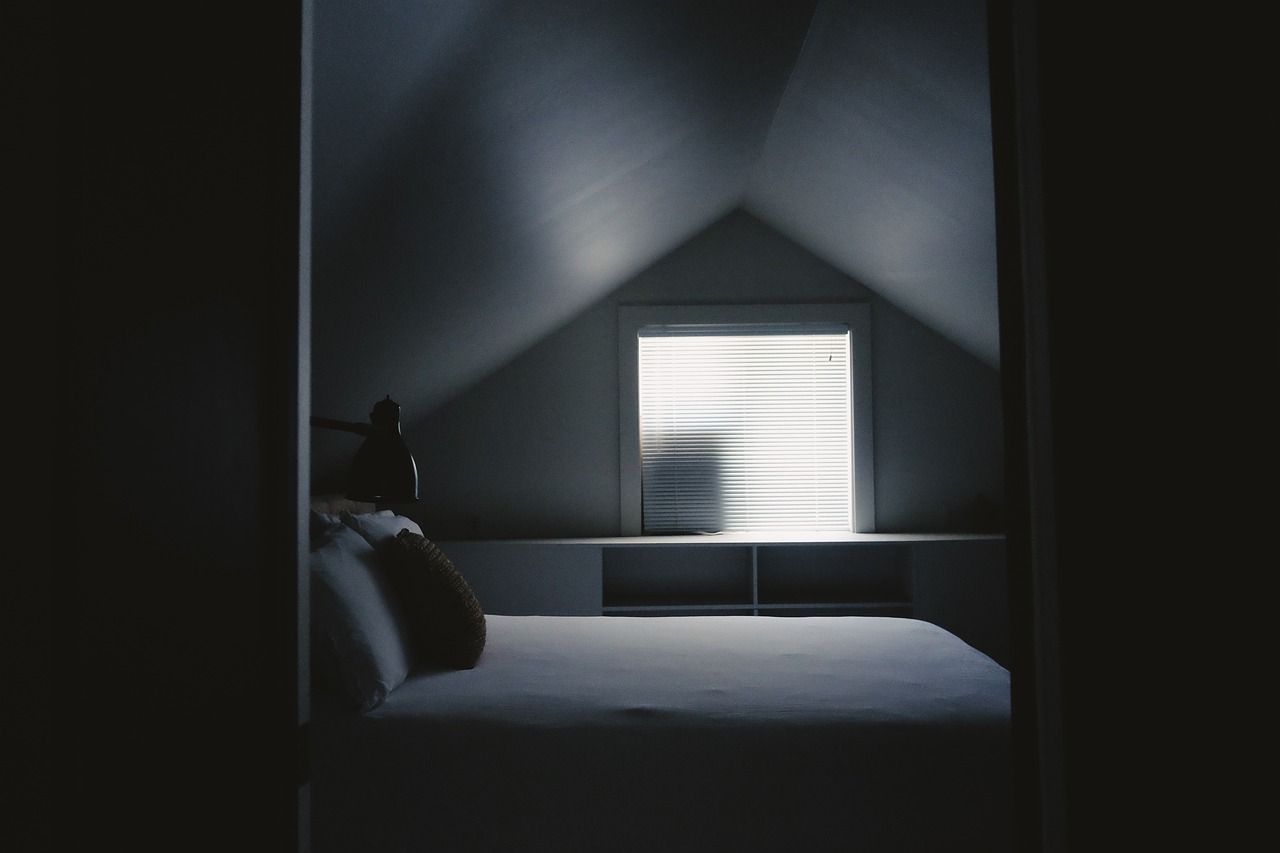
Materials for Your Raised Bed
When it comes to creating a raised bed garden, choosing the right materials is essential for both durability and aesthetics. Your selection can impact not only the lifespan of your garden beds but also the overall look of your outdoor space. The most common materials used for raised beds include wood, metal, and composite materials, each with its own set of advantages and disadvantages. Understanding these options will help you make an informed decision that aligns with your gardening goals.
Wood is often the go-to choice for many gardeners due to its natural appearance and ease of use. However, not all wood is created equal. You have options like untreated wood, cedar, and recycled materials, each offering unique benefits. Untreated wood is more environmentally friendly, but it tends to rot faster, especially when in contact with soil and moisture. On the other hand, treated wood can last longer but may contain chemicals that could leach into the soil, potentially harming your plants.
Among the wood options, cedar and redwood stand out as excellent choices due to their natural resistance to decay. These woods not only last longer than many other types but also add a beautiful aesthetic to your garden. Imagine the rich, warm tones of cedar contrasting with vibrant green plants—it’s a sight that can elevate any garden space. Additionally, using these types of wood means you can enjoy your raised bed for years without worrying about frequent replacements.
If you’re considering something a bit different, metal and composite materials are gaining popularity. Metal raised beds can offer a sleek, modern look and are incredibly durable. They can withstand the elements far better than wood, making them an ideal choice for those in harsher climates. Composite materials, which are made from recycled plastics and wood fibers, combine the best of both worlds: they’re long-lasting and resistant to rot while also being environmentally friendly. They can mimic the appearance of wood without the drawbacks, making them a practical choice.
Here’s a quick comparison of the different materials:
| Material | Durability | Cost | Aesthetic Appeal |
|---|---|---|---|
| Untreated Wood | Moderate | Low | Natural |
| Treated Wood | High | Moderate | Natural |
| Cedar/Redwood | High | High | Beautiful |
| Metal | Very High | Moderate to High | Modern |
| Composite | High | Moderate | Varied |
Ultimately, the choice of material will depend on your specific needs, budget, and aesthetic preferences. Whether you lean towards the classic look of wood, the modern appeal of metal, or the innovative nature of composites, there’s a perfect material out there for your raised bed garden. So, take your time, do your research, and choose wisely to ensure your garden thrives!
- What is the best material for a raised bed garden? The best material depends on your budget, aesthetic preferences, and how long you want the beds to last. Cedar and redwood are excellent for longevity, while metal offers a modern look.
- How deep should a raised bed be? A depth of 12 to 24 inches is generally recommended for most vegetables, allowing for ample root growth.
- Can I use treated wood for my raised bed? Yes, but be cautious about the chemicals used in the treatment. If growing edible plants, consider using untreated wood or choosing safe treated options.

Wood Options
When it comes to constructing your raised bed garden, wood is often the go-to choice for many gardeners. Its natural aesthetic and ease of use make it a popular option. However, not all wood is created equal, and understanding the different types can help you make an informed decision that suits both your garden's needs and your personal preferences. Let's explore some of the most common wood options available for your raised beds.
First off, you have untreated wood, which is an excellent choice if you're looking for a more natural approach. Untreated wood comes from trees that have not been chemically treated, making it a safer option for growing edible plants. However, keep in mind that untreated wood may not last as long as treated options, as it is more susceptible to rot and pests. If you choose this route, consider using hardwoods like oak or maple, which tend to have a longer lifespan than softer woods.
On the other hand, treated wood has undergone a process to enhance its durability. While it can be more resistant to the elements, there are some concerns regarding chemical leaching into the soil, especially if you're growing vegetables. It's crucial to research the type of treatment used, as some modern treatments are safer than older ones. For instance, pressure-treated wood with alkaline copper quat (ACQ) is considered safer for gardening than older treatments that used arsenic.
Next up are cedar and redwood, which are often regarded as the crème de la crème of wood options for raised beds. These woods are naturally resistant to decay and insects, making them an ideal choice for longevity. Not only do they last longer, but they also add a beautiful, rustic charm to your garden. Plus, the aromatic oils in cedar can help repel pests. While they may come at a higher price point, many gardeners find that the investment pays off in the long run.
In addition to these traditional options, you might also want to consider recycled wood. This can include reclaimed wood from old barns or pallets. Using recycled wood is not only eco-friendly but can also add a unique character to your garden. Just be cautious about the wood's previous use; avoid any materials that may have been treated with harmful chemicals.
To summarize, here’s a quick comparison of wood options for your raised bed:
| Wood Type | Durability | Cost | Suitability for Edibles |
|---|---|---|---|
| Untreated Wood | Moderate | Low | Yes |
| Treated Wood | High | Moderate | Depends on treatment |
| Cedar | High | High | Yes |
| Redwood | High | High | Yes |
| Recycled Wood | Variable | Variable | Depends on previous use |
Ultimately, the best wood for your raised bed garden will depend on your specific needs, budget, and aesthetic preferences. Take the time to weigh your options, and you’ll be well on your way to creating a beautiful and functional garden space!
- What is the best type of wood for a raised bed garden? Cedar and redwood are often recommended for their durability and natural pest resistance.
- Can I use treated wood for growing vegetables? Yes, but be sure to choose modern treatments that are deemed safe for gardening.
- How long will untreated wood last in a raised bed? Untreated wood typically lasts about 3-7 years, depending on the wood type and environmental conditions.
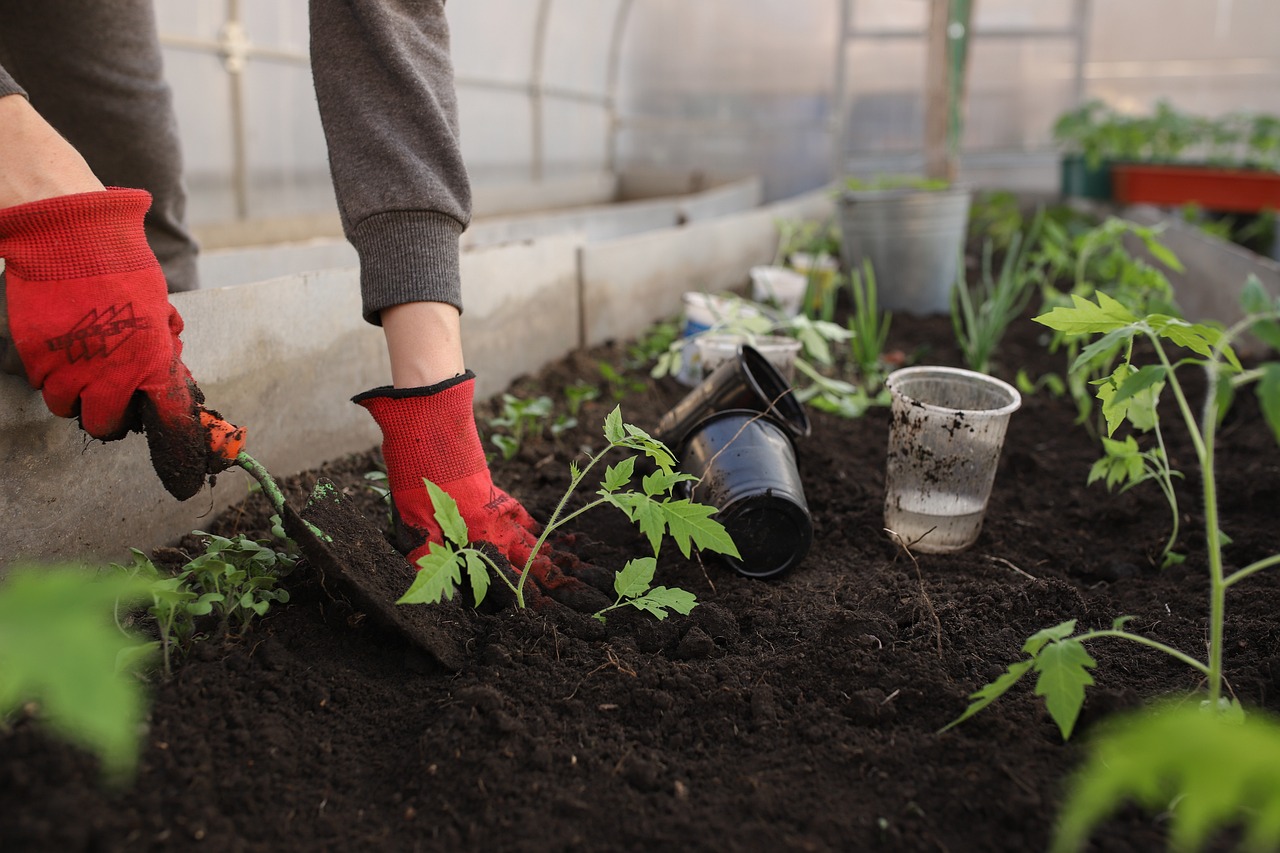
Untreated vs. Treated Wood
When it comes to building a raised bed garden, one of the most critical decisions you'll face is whether to use untreated wood or treated wood. Each option has its own set of pros and cons, and understanding these differences can greatly influence the health of your plants and the longevity of your garden structure.
Untreated wood is often favored by organic gardeners because it is free from chemical preservatives, making it a safer choice for growing edible plants. However, the downside is that untreated wood is more susceptible to rot and insect damage, which can shorten its lifespan significantly. Typically, untreated wood lasts about 5 to 7 years, depending on the environment and moisture levels.
On the other hand, treated wood is chemically preserved to resist decay and pests, which can extend its life to 10 years or more. However, the chemicals used in the treatment process can leach into the soil, raising concerns for those growing vegetables and herbs. It's crucial to check what kind of treatment has been applied; for instance, older pressure-treated woods often contained arsenic, which is no longer used in modern treatments. Nowadays, many manufacturers offer safe alternatives, such as ACQ (Alkaline Copper Quaternary), which is less harmful to plants and the environment.
To help you make an informed decision, here’s a quick comparison:
| Feature | Untreated Wood | Treated Wood |
|---|---|---|
| Longevity | 5-7 years | 10+ years |
| Chemical Concerns | None | Possible leaching of chemicals |
| Cost | Usually cheaper | Generally more expensive |
| Maintenance | More frequent replacement needed | Less frequent replacement needed |
Ultimately, the choice between untreated and treated wood will depend on your gardening goals, budget, and personal preferences. If you're focused on organic gardening and are willing to replace your beds more frequently, untreated wood might be the way to go. However, if you prefer a low-maintenance option that lasts longer, treated wood with safe preservatives could be your best bet.
- Can I use treated wood for growing vegetables? Yes, but ensure it is treated with safe chemicals.
- How long does untreated wood last in a raised bed? Typically, untreated wood lasts around 5 to 7 years.
- What are some alternatives to wood for raised beds? You can consider materials like metal, stone, or composite materials.
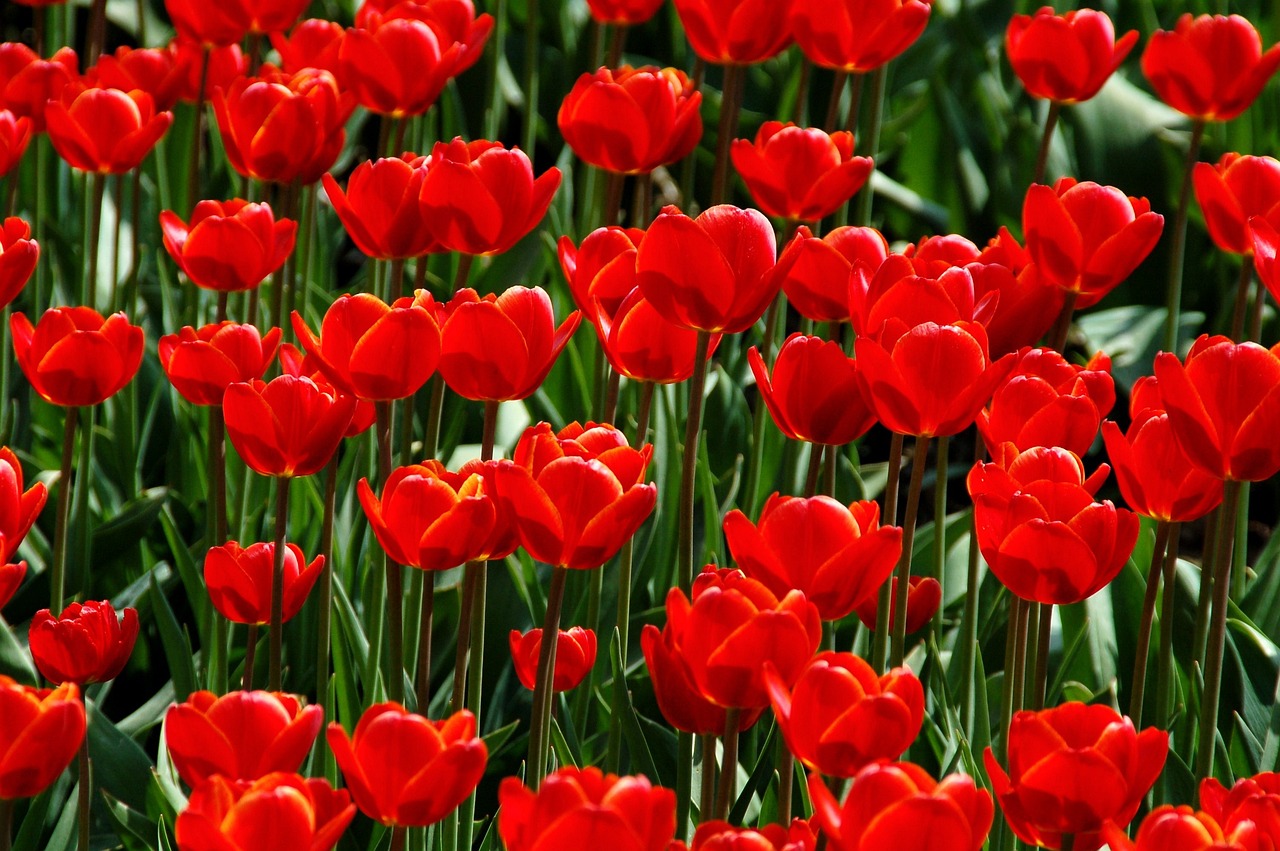
Cedar and Redwoods
When it comes to building a raised bed garden, cedar and redwood are two of the best options you can choose. These types of wood are not only aesthetically pleasing, but they also come with natural properties that make them resistant to decay and insect damage. Imagine having a garden that not only flourishes but also looks stunning with the warm tones of cedar or the rich hues of redwood. This is where the beauty of these materials shines through!
One of the main advantages of using cedar and redwood is their longevity. Unlike other woods that may succumb to rot after a few seasons, cedar and redwood can last for decades if properly maintained. This means less hassle and more time enjoying your garden. Plus, they don't require chemical treatments, which is a significant benefit if you're growing edible plants. You want to ensure that your vegetables and herbs are free from harmful substances, right?
Another fantastic aspect of cedar and redwood is their natural resistance to moisture, which helps prevent warping and splitting. This is particularly important in areas with heavy rainfall or fluctuating temperatures. With cedar and redwood, you can rest assured that your raised beds will maintain their shape and integrity over time.
In terms of aesthetics, both cedar and redwood have a beautiful grain that adds a touch of elegance to any garden. They can be left untreated for a rustic look or sealed to maintain their vibrant colors. Whatever your style, these woods can adapt to your vision. Plus, they blend seamlessly into the natural landscape, making your garden feel like a harmonious extension of your home.
However, it's essential to keep in mind that while cedar and redwood are fantastic choices, they can be a bit pricier than other materials. If you're on a budget, you might want to weigh your options carefully. Nevertheless, the investment often pays off in terms of durability and visual appeal. If you're considering these woods, here are a few tips:
- Look for sustainably sourced wood to ensure you're making an environmentally friendly choice.
- Consider using reclaimed cedar or redwood for a unique touch and to reduce waste.
- Regularly inspect your raised beds for any signs of wear and tear to prolong their life.
In conclusion, if you're aiming for a raised bed garden that combines function with beauty, cedar and redwood are excellent choices. Their natural properties, aesthetic appeal, and durability make them stand out as top contenders for any gardening enthusiast. So, why not give your plants the best home possible? Choose cedar or redwood, and watch your garden thrive!
1. How long do cedar and redwood raised beds last?
Cedar and redwood can last anywhere from 10 to 30 years, depending on the level of care and maintenance they receive.
2. Are cedar and redwood safe for growing edible plants?
Yes! Both cedar and redwood are naturally resistant to decay and do not require chemical treatments, making them safe for growing vegetables and herbs.
3. Can I use treated wood instead of cedar or redwood?
While treated wood is durable, it may contain chemicals that can leach into the soil. If you're growing edibles, it's best to avoid treated wood.
4. How can I maintain my cedar or redwood raised beds?
Regularly check for signs of wear, clean the wood, and consider applying a sealant to maintain its appearance and prolong its life.

Metal and Composite Materials
When it comes to building a raised bed garden, offer a unique blend of durability and aesthetic appeal that can enhance your gardening experience. Unlike traditional wood, these materials can withstand the elements, providing a long-lasting solution for your gardening needs. Metal raised beds, often made from galvanized steel or aluminum, are not only sturdy but also come in various designs and finishes, allowing you to customize your garden to your liking. Imagine the sleek look of a shiny metal bed juxtaposed against the vibrant greens of your plants; it’s a visual treat!
Composite materials, on the other hand, are made from a combination of recycled plastics and wood fibers, making them an eco-friendly option. They mimic the appearance of wood but are resistant to rot, splintering, and pests, which means less maintenance for you. Plus, they come in a variety of colors and textures, giving you the freedom to choose a style that complements your outdoor space. With both metal and composite options, the sky's the limit when it comes to creativity in your garden design.
Here’s a quick comparison table to help you decide between metal and composite materials for your raised bed:
| Material Type | Durability | Maintenance | Aesthetic Appeal | Cost |
|---|---|---|---|---|
| Metal | Very High | Low | Modern and Sleek | Medium to High |
| Composite | High | Very Low | Natural Look | Medium |
Both materials have their pros and cons, so the choice ultimately depends on your personal preferences and gardening goals. If you’re looking for a long-lasting structure that can handle the rigors of nature, metal might be your best bet. However, if you prefer a more traditional look with less upkeep, composite materials could be the way to go. Either way, investing in quality materials will pay off in the long run, as you’ll spend less time worrying about repairs and more time enjoying your flourishing garden.
In conclusion, whether you choose metal or composite materials for your raised bed garden, you’re making a choice that can enhance both the functionality and beauty of your space. So go ahead, get creative, and let your garden reflect your personality!
- Are metal raised beds safe for growing vegetables? Yes, metal raised beds, especially those made from food-grade materials like galvanized steel, are safe for growing vegetables.
- Do composite materials fade over time? While composite materials can fade slightly, they are designed to resist discoloration and maintain their appearance longer than traditional wood.
- Can I use both metal and composite materials together? Absolutely! Mixing materials can create a unique and visually appealing garden design.
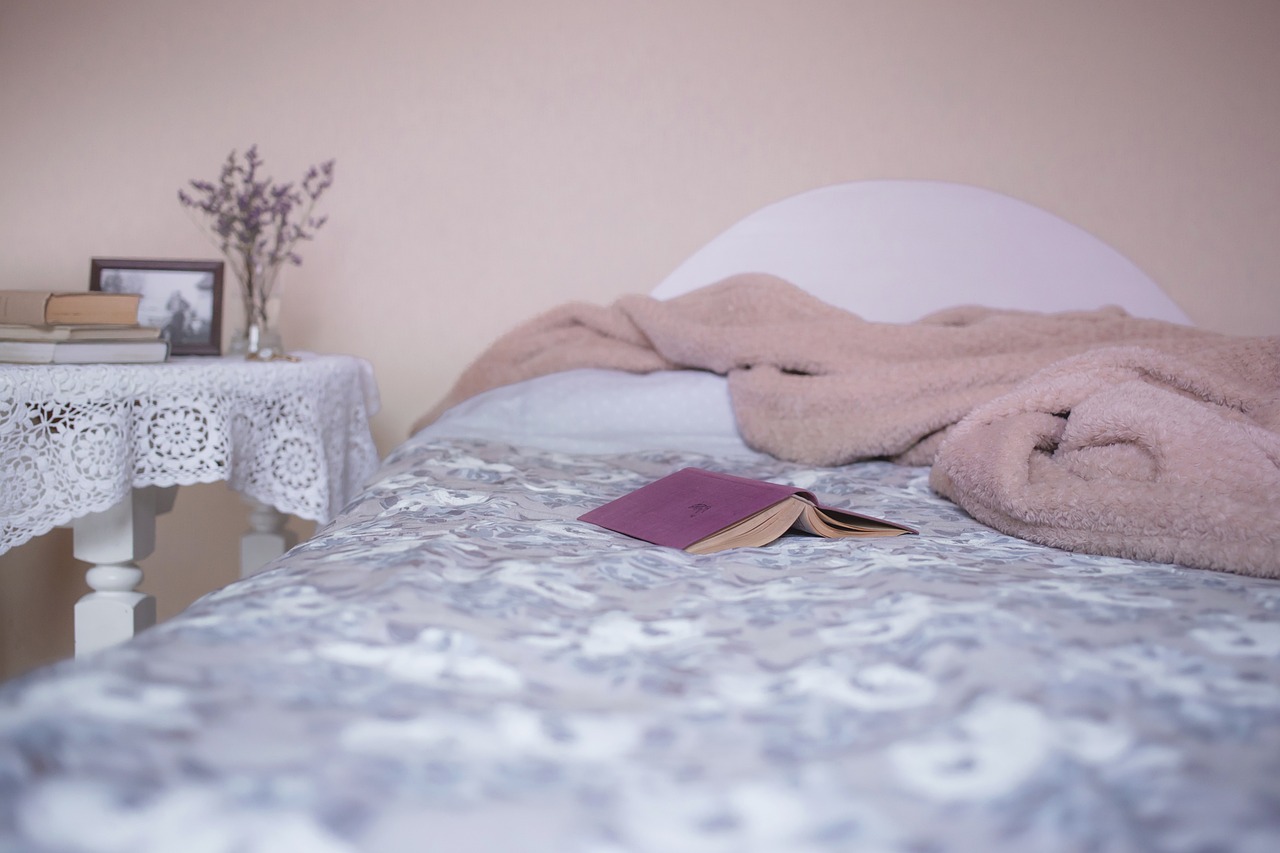
Designing Your Raised Bed
Designing your raised bed garden is more than just a fun DIY project; it's about creating a space where your plants can thrive and you can enjoy the fruits of your labor. The right design can significantly impact not only the aesthetics of your garden but also its functionality. So, where do you start? First, consider the size and shape of your raised bed. These elements should align with your gardening goals and the space you have available. For instance, if you’re tight on space, a narrow, rectangular bed might be your best bet, allowing easy access to all plants without stepping on the soil. On the other hand, if you have a bit more room, why not let your creativity shine with a circular or even an L-shaped design? Such unique shapes can add visual interest to your garden layout.
When it comes to size, a standard raised bed is typically around 4 feet wide, allowing you to reach the center from either side without straining your back. The length can vary based on your space, but a common choice is between 6 to 8 feet. If you’re considering height, most experts recommend a depth of at least 12 inches to accommodate root systems, but if you're growing deeper-rooted plants, you might want to go even deeper. Remember, the dimensions should not only cater to the needs of your plants but also to your own comfort and accessibility.
Another crucial aspect of designing your raised bed is the layout. Think about how you want to arrange your plants. You could opt for a traditional row layout, which is straightforward and easy to manage. However, if you're feeling adventurous, consider a more intensive planting style, such as square foot gardening. This method maximizes space and can lead to higher yields in smaller areas. You might want to create a planting plan that includes companion planting, where certain plants are grown together to enhance growth, deter pests, or improve flavor.
Lastly, don’t forget about aesthetics! The materials you choose for your raised bed can greatly influence its overall look. Whether you go for rustic wood, sleek metal, or colorful composite materials, make sure they complement your garden's style. Adding decorative elements like trellises, pathways, or even a seating area can elevate your garden from functional to fabulous. In essence, the design of your raised bed should reflect your personality while meeting the practical needs of your plants.
- What is the ideal size for a raised bed? A common size is 4 feet wide by 6-8 feet long, with a height of at least 12 inches.
- Can I use any type of wood for my raised bed? While you can use various types of wood, untreated cedar or redwood is recommended for durability and resistance to decay.
- What plants grow best in raised beds? Vegetables like tomatoes, peppers, and herbs such as basil and parsley thrive in raised beds.
- How often should I water my raised bed garden? This depends on the climate and plant types, but generally, aim for consistent moisture without waterlogging.
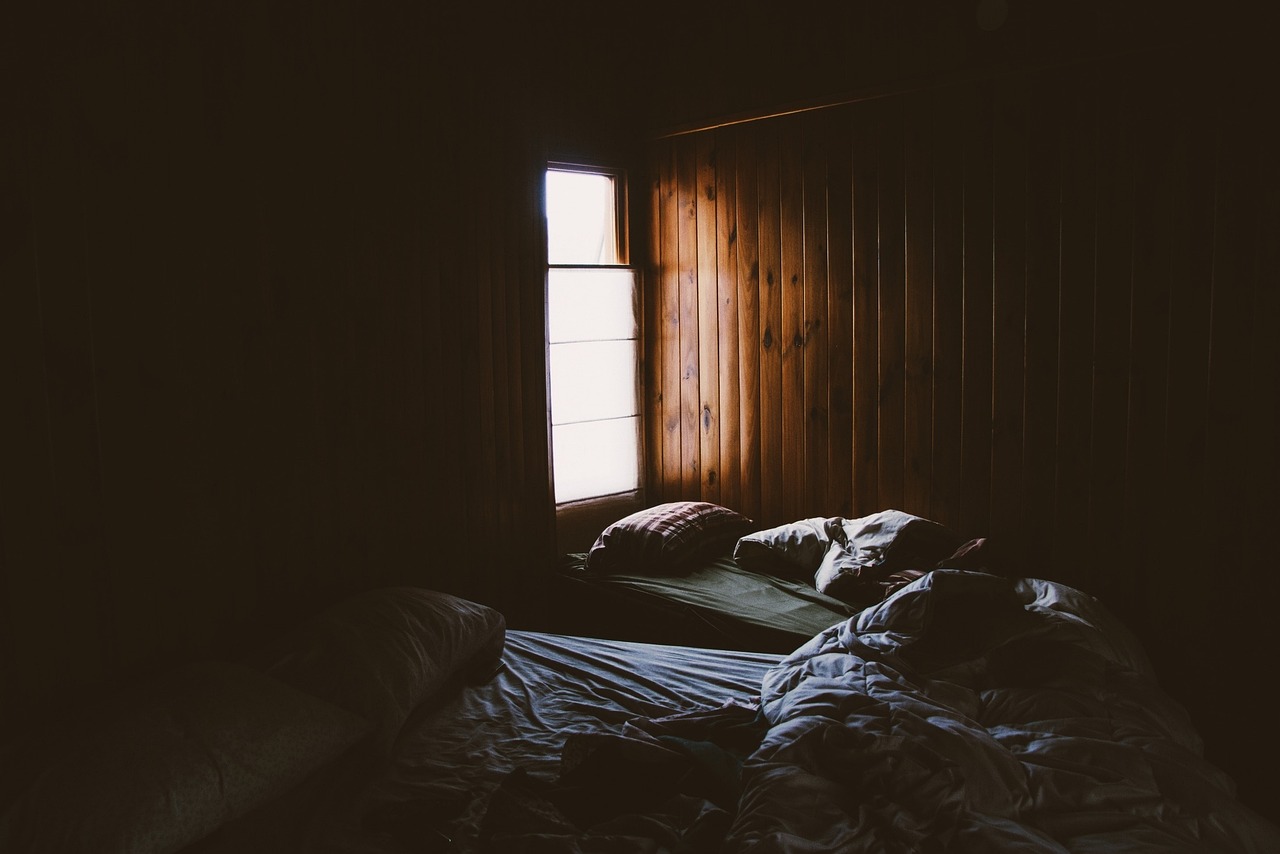
Size and Dimensions
When it comes to creating a raised bed garden, one of the most critical factors to consider is the of your beds. The right dimensions can make a world of difference in your gardening experience, affecting everything from accessibility to plant health. Generally, a width of 4 feet is recommended for raised beds, as this allows you to reach into the center from either side without stepping on the soil. If you're planning a longer bed, keep in mind that you can always extend its length, but maintaining that 4-foot width will help you easily manage your plants.
As for the height, raised beds typically range from 12 to 30 inches tall. A height of around 12 to 18 inches is often sufficient for most vegetables, while 24 to 30 inches can be ideal for those who prefer to garden while standing or for individuals with mobility issues. The depth of the soil is equally important; at least 6 to 12 inches of soil is recommended for root vegetables, while most herbs and leafy greens can thrive in shallower depths.
Another aspect to consider is the overall layout of your garden. Think about how many beds you want and how they will fit into your available space. For instance, if you have a small yard, you might opt for a single long bed, while larger gardens can accommodate multiple smaller beds arranged in a grid or staggered pattern. Here’s a quick reference table to help you visualize different sizes:
| Bed Size | Width | Length | Height |
|---|---|---|---|
| Small | 3 ft | 6 ft | 12 in |
| Medium | 4 ft | 8 ft | 18 in |
| Large | 4 ft | 12 ft | 24 in |
Ultimately, the size and dimensions of your raised bed should cater to your gardening style and the types of plants you wish to grow. Consider your physical comfort and the accessibility of your garden space, especially if you plan to spend long hours tending to your plants. Remember, a well-designed raised bed not only enhances your gardening experience but also contributes to the overall beauty of your outdoor space.
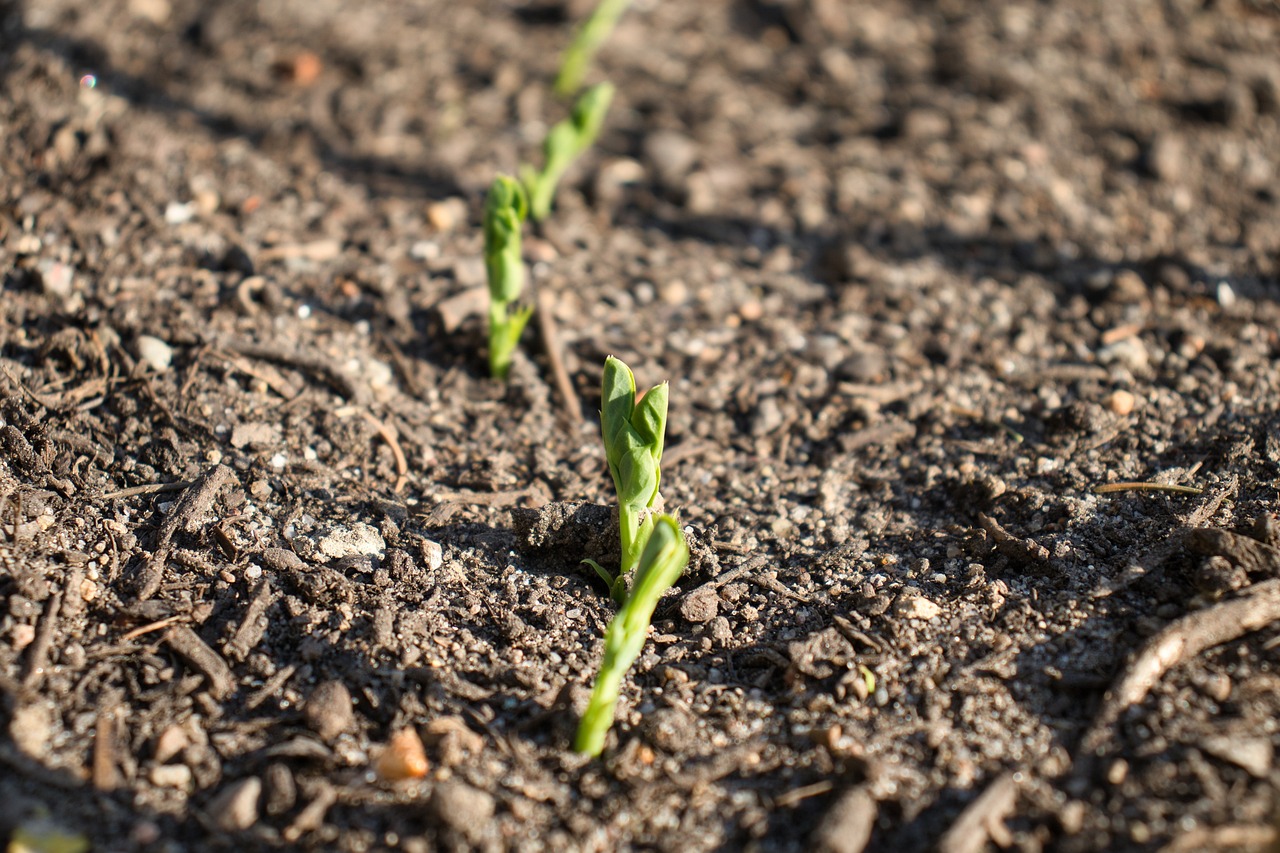
Shape and Layout
When it comes to designing your raised bed garden, the are crucial elements that can significantly impact both aesthetics and functionality. Think of your garden as a canvas; the way you arrange your plants and beds can create a stunning masterpiece. Whether you're going for a traditional look or something more modern and eclectic, the possibilities are endless.
One of the most popular shapes for raised beds is the classic rectangular design. This shape is not only easy to construct but also maximizes space efficiently. You can line them up in rows or stagger them for a more dynamic appearance. However, don't feel limited to rectangles! Circular or oval beds can add a unique twist and serve as focal points in your garden. Imagine walking through a garden where vibrant flowers bloom in a circular pattern, drawing the eye and creating a sense of harmony.
Additionally, consider the layout of your beds in relation to your garden space. Accessibility is key. You want to be able to reach every part of your garden without stepping on the soil, which can compact it and hinder plant growth. A good rule of thumb is to keep your beds no wider than 4 feet, allowing you to easily reach the center from either side. For longer gardens, you might want to create pathways between beds that are at least 2 feet wide. This not only gives you room to maneuver but also adds an organized feel to your garden.
Another aspect to consider is the orientation of your beds. Positioning them to receive maximum sunlight is essential for healthy plant growth. If you have a lot of space, you might want to create a layout that allows for different sun exposure levels, accommodating plants that prefer full sun alongside those that thrive in partial shade. You could even incorporate vertical gardening elements like trellises, which can add height and visual interest while maximizing your planting area.
Lastly, don't forget about the flow of your garden. Just like a well-planned room, a garden should invite exploration. Use curves and varying heights to guide visitors through your space. You might consider adding stepping stones or mulch paths that lead to different sections of your garden. This not only enhances the visual appeal but also encourages people to interact with your plants.
In summary, the shape and layout of your raised bed garden can transform it from a simple planting area into a stunning landscape feature. Embrace creativity, consider functionality, and let your garden reflect your personal style. Remember, it's not just about growing plants; it's about creating a space that brings joy and tranquility.
- What is the best shape for a raised bed garden? The best shape depends on your space and personal preference, but rectangular and circular designs are both popular and effective.
- How wide should my raised beds be? It's recommended to keep raised beds no wider than 4 feet for easy access.
- Can I mix different shapes in my garden? Absolutely! Mixing shapes can add visual interest and create a more dynamic garden space.
- What should I consider when laying out my garden? Consider sunlight exposure, accessibility, and the flow of the garden to ensure a functional and inviting space.
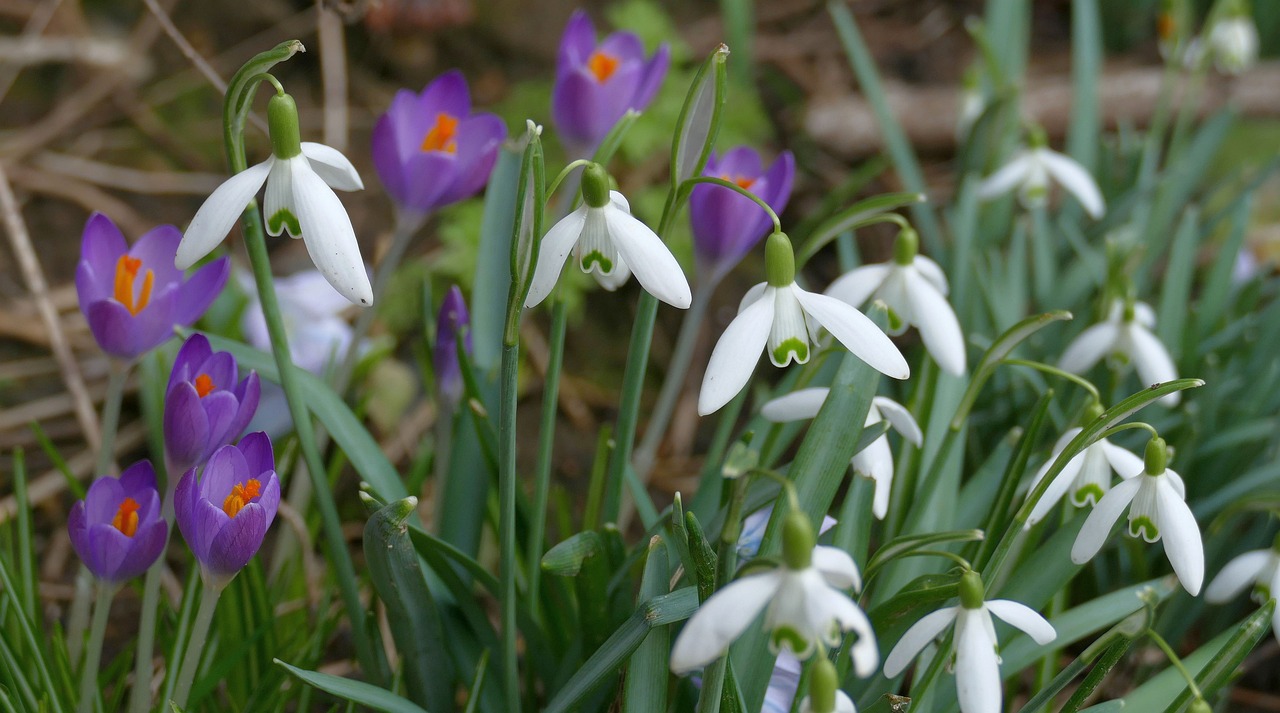
Soil and Plant Selection
Choosing the right soil mix and selecting the appropriate plants are two of the most critical aspects of establishing a successful raised bed garden. Think of your soil as the foundation of a house; without a solid base, everything built on top can crumble. A well-balanced soil mix is crucial for ensuring your plants receive the nutrients they need to thrive. Typically, a good soil mix for raised beds consists of a combination of compost, topsoil, and organic matter. This blend not only provides essential nutrients but also enhances drainage and aeration, allowing roots to grow freely.
When creating your perfect soil mix, aim for a ratio that combines these elements effectively. A popular guideline is to use:
| Component | Percentage |
|---|---|
| Compost | 50% |
| Topsoil | 30% |
| Organic Matter (e.g., peat moss, leaf mold) | 20% |
Now that we’ve got the soil mix down, let’s talk about selecting the right plants for your raised bed. Not all plants are created equal, and some thrive better in raised beds than others. When planning your garden, consider the following:
- Vegetables: Leafy greens like spinach and lettuce are excellent choices. They grow quickly and can be harvested multiple times.
- Herbs: Basil, cilantro, and parsley are not just flavorful additions to your meals; they also do well in raised beds.
- Flowers: Incorporating flowers like marigolds can attract beneficial insects while adding beauty to your garden.
When selecting plants, consider your local climate and the specific growing conditions of your raised bed. For instance, if your garden receives full sun, you might want to choose heat-loving plants like tomatoes and peppers. Conversely, if your raised bed is partially shaded, leafy greens and root vegetables may be more suitable.
Lastly, think about the growing season. Planning for seasonal planting can maximize your yield and keep your garden productive year-round. For example, you might start with cool-season crops in early spring, such as peas and radishes, and transition to warm-season crops like zucchini and corn as the weather warms up. This approach not only keeps your garden looking vibrant but also ensures that you enjoy a variety of fresh produce throughout the year.
Q1: Can I use regular garden soil in my raised bed?
A: While you can use garden soil, it’s often too compact and may not provide the nutrients or drainage needed for optimal plant growth. A mix of compost and topsoil is recommended.
Q2: How often should I change the soil in my raised bed?
A: It’s a good idea to refresh your soil every couple of years by adding new compost and organic materials to maintain nutrient levels.
Q3: What are the best plants for beginners in raised beds?
A: Easy-to-grow plants include radishes, lettuce, and herbs like basil and parsley. They are forgiving and can help build your confidence as a gardener.

Creating the Perfect Soil Mix
When it comes to establishing a thriving raised bed garden, the foundation of your success lies in the soil mix. Think of it as the bedrock of your garden—quite literally! A well-balanced soil mix provides the essential nutrients, drainage, and aeration that plants need to flourish. So, how do you create the perfect blend? Let's break it down.
First off, you’ll want to start with a base of quality topsoil. This is the heart of your soil mix and should make up about 40% of the total volume. Topsoil is rich in organic matter and nutrients, making it ideal for supporting plant growth. Next, you’ll want to add compost, which should account for another 40% of your mix. Compost not only enriches the soil with nutrients but also improves its structure, enhancing moisture retention and aeration. You can either make your own compost or purchase it from a garden center.
The remaining 20% of your mix can consist of amendments such as peat moss, vermiculite, or perlite. These materials help improve drainage and aeration, ensuring your plants' roots have the space they need to grow. For instance, peat moss retains moisture, while perlite increases drainage—both are crucial in maintaining the right moisture balance in your raised bed.
Here’s a simple recipe to follow for your perfect soil mix:
| Ingredient | Percentage |
|---|---|
| Topsoil | 40% |
| Compost | 40% |
| Peat Moss or Vermiculite | 20% |
Once you’ve gathered your materials, it’s time to mix them together. A wheelbarrow or a large container can be handy for this process. Just remember to wear gloves and a mask if you’re sensitive to dust! Mix thoroughly to ensure an even distribution of all components. This will help prevent any pockets of poor soil that could hinder plant growth.
After mixing, it’s essential to test your soil’s pH. Most vegetables prefer a pH level between 6.0 and 7.0. You can purchase a simple soil test kit from a garden store. If your soil is too acidic, you can add lime; if it's too alkaline, sulfur can help bring it down. Adjusting the pH is a crucial step to ensure your plants can absorb nutrients effectively.
Finally, remember that soil is not a one-time deal. It needs to be replenished and refreshed over time. As your plants grow and decompose, the nutrients in your soil will dwindle. Regularly adding compost and organic matter will keep your soil rich and productive, making your raised bed garden a sustainable source of delicious vegetables and beautiful flowers.
- How often should I refresh my soil mix? It's a good idea to add fresh compost to your raised bed each season to replenish nutrients.
- Can I use garden soil instead of topsoil? While garden soil can be used, it may contain pests or diseases. Topsoil is usually cleaner and more nutrient-rich.
- What if my soil mix is too compacted? If your soil feels dense, consider adding more perlite or vermiculite to improve aeration.

Selecting Suitable Plants
When it comes to creating a successful raised bed garden, one of the most exciting yet challenging aspects is selecting the right plants. Not every plant will flourish in the unique environment that raised beds provide, so it's essential to choose wisely. Think of your raised bed as a mini-ecosystem where certain plants can thrive together, much like a well-rehearsed band playing in harmony. You want to create a symphony of colors, flavors, and textures that not only look beautiful but also grow well together.
Start by considering your climate. Different plants have varying temperature and sunlight requirements. For instance, if you live in a cooler region, you might want to focus on cold-hardy crops like kale, spinach, and radishes. On the other hand, warmer climates may allow you to grow vibrant tomatoes, peppers, and squash. It’s crucial to understand your local growing season and plan accordingly. A quick glance at a USDA Plant Hardiness Zone Map can provide valuable insight into what plants will thrive in your area.
Next, think about the space available in your raised bed. Some plants, like tomatoes and zucchini, require more room to spread out, while others, such as lettuce and herbs, can be planted more closely together. Consider companion planting, which not only maximizes space but also promotes healthy growth. For example, planting basil alongside tomatoes can enhance their flavor and deter pests. Here’s a quick reference chart for some popular companion plants:
| Plant | Companion Plant | Benefit |
|---|---|---|
| Tomato | Basil | Improves flavor and deters pests |
| Carrot | Onion | Repels carrot flies |
| Cucumber | Radish | Deters cucumber beetles |
| Spinach | Strawberries | Maximizes space and enhances flavor |
Furthermore, consider the growth habits of the plants you choose. Some plants grow tall and upright, while others spread out or trail. This is important to avoid overshadowing shorter plants that need more sunlight. For instance, if you plant sunflowers, they can provide a stunning backdrop while allowing shorter plants like marigolds to bask in the sunlight below. Don't forget about vertical gardening techniques; using trellises or cages can help you maximize your space while adding visual interest to your garden.
Lastly, think about what you actually enjoy eating. There’s nothing quite like the joy of harvesting fresh vegetables from your own garden. If you love cooking with fresh herbs, consider planting basil, cilantro, or parsley. If you have a sweet tooth, why not add some strawberries or cherry tomatoes? By growing what you love, you’ll be more motivated to care for your garden and enjoy the fruits of your labor. Remember, gardening should be a delightful experience, not a chore!
In summary, selecting suitable plants for your raised bed garden is all about understanding your environment, maximizing your space, and growing what you love. By taking the time to plan your plant selections, you’ll create a thriving garden that brings joy and nourishment all season long.
- What plants grow best in raised beds? - Some of the best plants for raised beds include tomatoes, peppers, lettuce, and herbs. Choose plants that suit your climate and growing conditions.
- Can I plant flowers in my raised bed? - Absolutely! Flowers can attract beneficial insects and add beauty to your garden. Consider planting marigolds or nasturtiums alongside your vegetables.
- How deep should a raised bed be for vegetables? - A depth of 12 to 18 inches is generally recommended for most vegetable crops to ensure adequate root growth.
- Do I need to rotate crops in raised beds? - Yes, practicing crop rotation helps prevent soil depletion and reduces the risk of pests and diseases.

Watering and Maintenance Tips
Proper watering and maintenance are the lifeblood of your raised bed garden. Think of your plants as delicate companions that need just the right amount of attention to thrive. Overwatering can drown their roots, while underwatering can leave them parched and stressed. So, how do you find that sweet spot? One effective method is to establish a consistent watering schedule based on the specific needs of your plants and the local climate. For instance, during hot summer days, your garden might require more frequent watering, while cooler months may allow for longer intervals between drinks.
One popular technique is to use drip irrigation. This method delivers water directly to the roots, minimizing evaporation and runoff, which is especially beneficial in raised beds where soil can dry out quickly. Additionally, soaker hoses can be laid on the surface of the soil, allowing water to seep through slowly, ensuring that moisture reaches deep into the root zone. These methods not only conserve water but also promote healthier plant growth by reducing the risk of fungal diseases that can arise from wet foliage.
Now, let's talk about maintenance. Keeping your raised bed garden in tip-top shape involves more than just watering. Regularly checking for weeds is crucial, as they compete with your plants for nutrients and water. Consider dedicating a few minutes each week to pull out any pesky weeds before they have a chance to take root. For those who prefer a more hands-off approach, a layer of mulch can be a game-changer. Mulch not only suppresses weeds but also helps retain moisture in the soil, which means less frequent watering for you!
Pest control is another essential aspect of maintenance. It's important to keep an eye out for any signs of pests that could threaten your plants. A simple inspection can save you from bigger problems down the line. If you do spot unwanted guests, consider using organic methods to control them. For example, introducing beneficial insects like ladybugs can help keep aphid populations in check. You can also create barriers, such as floating row covers, to protect your plants from larger pests.
To help you keep track of your watering and maintenance tasks, consider creating a simple garden journal. This can be a fun way to monitor what works and what doesn't. You can include notes on watering frequency, pest sightings, and even the growth progress of your plants. Over time, you'll develop a better understanding of your garden's unique needs, making it easier to adapt your care routine.
Lastly, remember that gardening is a journey, not a race. Every garden is different, and what works for one may not work for another. Be patient, observe your plants, and adjust your techniques as needed. With a little love and attention, your raised bed garden will flourish, providing you with fresh produce and a sense of accomplishment.
- How often should I water my raised bed garden?
Watering frequency depends on the climate and plant types. Generally, aim for 1-2 inches of water per week. - What is the best time of day to water?
Early morning is ideal, as it allows plants to absorb moisture before the heat of the day. - Can I use tap water for my garden?
Yes, but let it sit for a few hours to allow chlorine to dissipate, especially if you have sensitive plants. - How can I prevent pests in my raised bed garden?
Regularly inspect your plants, use organic pest control methods, and introduce beneficial insects to help manage pest populations.
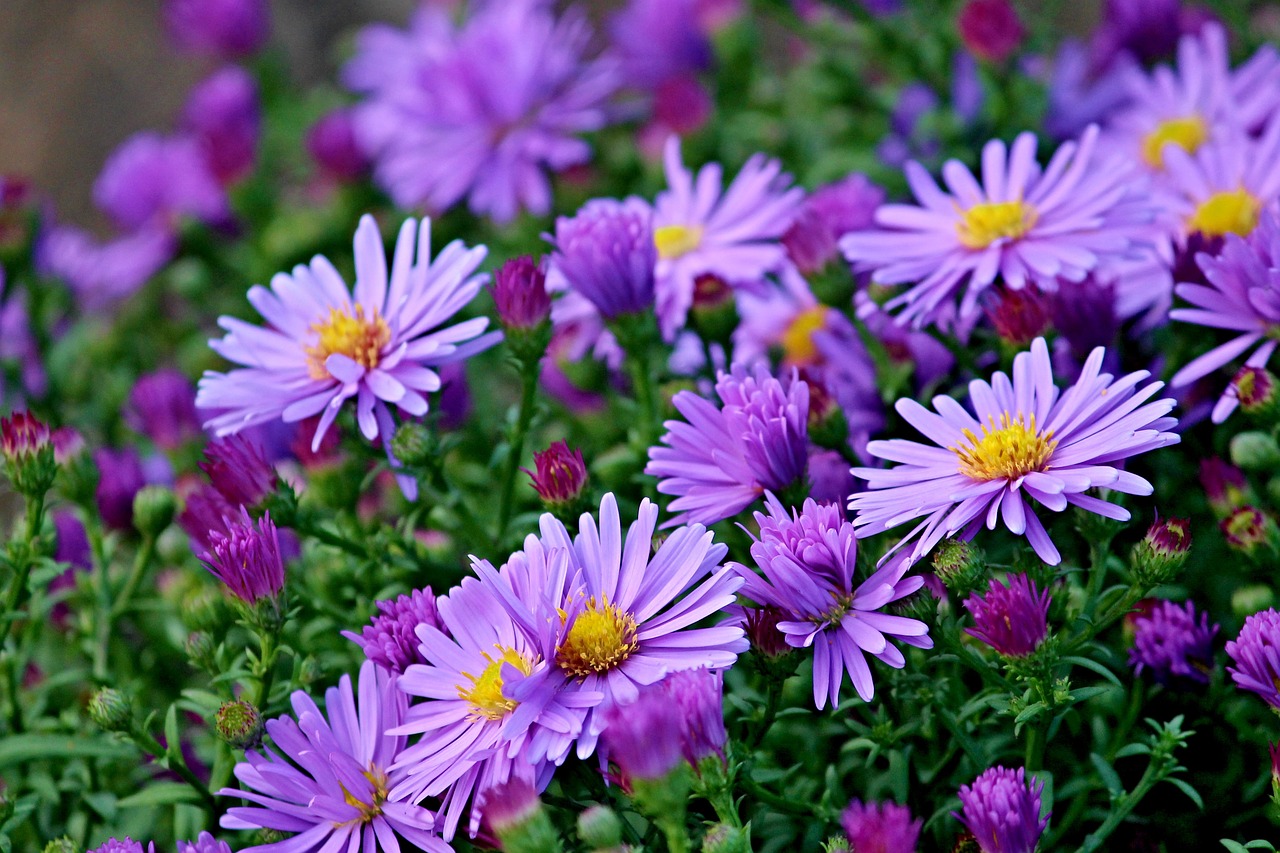
Watering Techniques
When it comes to nurturing your raised bed garden, play a pivotal role in ensuring your plants flourish. It's not just about dousing the soil with water; it's about understanding the needs of your plants and the best methods to deliver moisture efficiently. Overwatering can lead to root rot, while underwatering can stress your plants, causing them to wilt and hinder growth. So, how do you strike the perfect balance? Let's dive into some effective watering techniques that will keep your garden thriving.
One of the most popular methods for watering raised beds is using drip irrigation. This system delivers water directly to the base of each plant, minimizing evaporation and runoff. Drip irrigation is not only efficient but also conserves water, making it an eco-friendly option for gardeners. You can easily set up a drip system with a timer to automate the process, ensuring your plants receive consistent moisture without the guesswork.
Another effective technique is using soaker hoses. These porous hoses allow water to seep slowly into the soil, providing a steady moisture level. Lay the soaker hose along the rows of your plants, and turn it on for a few hours to let the water penetrate deeply into the soil. This method is particularly beneficial for larger raised beds, as it can cover a wide area without the need for constant monitoring.
For those who prefer a more hands-on approach, watering cans or garden hoses can also do the trick. However, it's essential to water at the right time of day. Early morning is the best time to water your garden, as it allows plants to absorb moisture before the heat of the day. Watering in the evening can lead to increased humidity and a higher risk of fungal diseases, which is something every gardener wants to avoid.
Here are a few tips to keep in mind when watering your raised bed garden:
- Check the soil moisture: Before watering, stick your finger into the soil about an inch deep. If it feels dry, it's time to water.
- Water deeply: Aim for a thorough soak rather than a light sprinkle. This encourages deep root growth, making your plants more resilient.
- Adjust for weather: During hot, dry spells, your plants may need more frequent watering. Conversely, reduce watering during cooler, rainy periods.
Lastly, consider mulching your raised beds. A layer of organic mulch not only helps retain soil moisture but also suppresses weeds, which can compete with your plants for water and nutrients. As the mulch breaks down, it adds valuable organic matter to the soil, further enriching your garden.
In summary, mastering your watering techniques is crucial for the success of your raised bed garden. Whether you choose drip irrigation, soaker hoses, or traditional methods, the key is to remain attentive to your plants' needs. With the right approach, you'll be well on your way to cultivating a vibrant and productive garden.
- How often should I water my raised bed garden? It depends on the weather and your soil type, but generally, watering once or twice a week is sufficient.
- Can I use rainwater for my garden? Absolutely! Collecting rainwater is a sustainable practice that benefits your plants.
- What signs indicate that my plants need more water? Wilting leaves, dry soil, and slow growth are all indicators that your plants might need additional moisture.
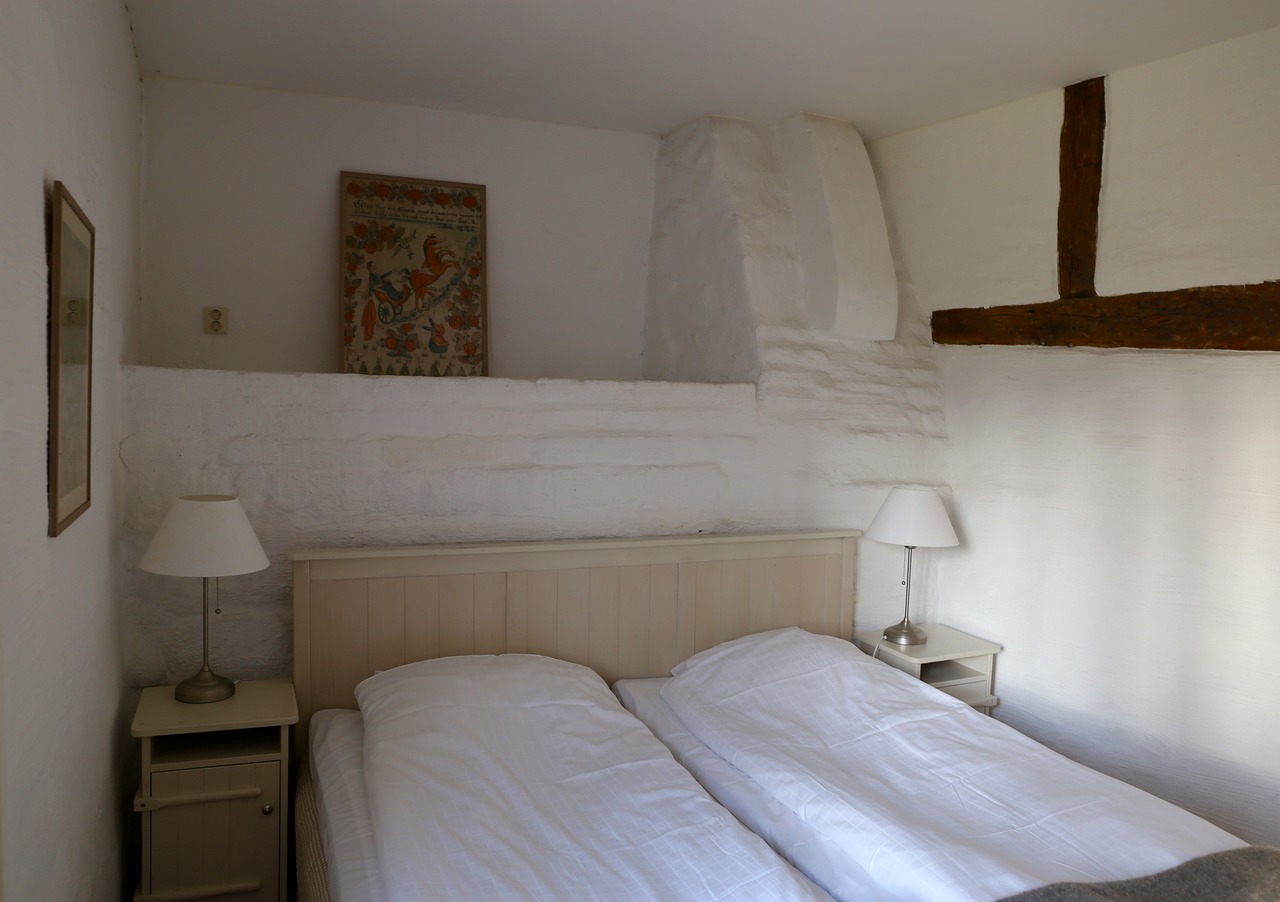
Weeding and Pest Control
Maintaining a weed-free and pest-resistant environment is essential for your raised bed garden to thrive. Weeds can compete with your plants for nutrients, water, and sunlight, while pests can damage your crops and reduce your harvest. So, how do you tackle these challenges? It's all about being proactive and using the right strategies!
First off, let’s talk about weeding. Regularly inspecting your garden is crucial. Weeds can sprout quickly, so you want to catch them before they take over. A good practice is to check your raised beds at least once a week. Pulling weeds by hand is often the most effective method, especially when the soil is moist. This makes it easier to remove the entire root, preventing them from growing back. If you notice that certain weeds are more persistent, consider using mulch around your plants. Mulch not only suppresses weed growth but also helps retain moisture in the soil.
Now, onto pest control. The first line of defense is to understand which pests are common in your area and how they affect your plants. For example, aphids, caterpillars, and beetles can wreak havoc if left unchecked. Instead of reaching for chemical pesticides, consider organic methods that are safer for both you and the environment. Here are a few strategies:
- Companion Planting: Some plants naturally repel pests. For instance, planting marigolds alongside your vegetables can deter nematodes and aphids.
- Neem Oil: This natural pesticide is effective against a variety of insects and can be sprayed on affected plants.
- Insect Barriers: Using row covers can physically block pests from reaching your plants while still allowing light and moisture to penetrate.
Another effective method is to encourage beneficial insects, such as ladybugs and lacewings, which feed on pests. You can attract these helpful critters by planting flowers like dill, fennel, and yarrow. Creating a balanced ecosystem in your garden will not only help control pests but also promote healthy plant growth.
Finally, don't forget about regular maintenance. Keeping your garden clean and free from debris will minimize hiding spots for pests. Regularly check for signs of pest activity, such as chewed leaves or sticky residue, and act quickly to address any issues. By combining these techniques, you can create a thriving raised bed garden that's not only beautiful but also productive.
Q: How often should I weed my raised bed garden?
A: It's best to check your garden at least once a week for weeds, especially during the growing season when they can sprout quickly.
Q: What are some organic methods for pest control?
A: You can use companion planting, neem oil, and insect barriers to manage pests organically. Additionally, encouraging beneficial insects can help keep pest populations in check.
Q: Is mulch effective for weed control?
A: Yes, mulch is very effective for suppressing weeds and retaining moisture in the soil. It creates a barrier that prevents sunlight from reaching weed seeds.
Q: How can I attract beneficial insects to my garden?
A: Planting flowers like dill, fennel, and yarrow can attract beneficial insects that prey on common garden pests.
Frequently Asked Questions
- What is a raised bed garden?
A raised bed garden is a gardening method where soil is elevated above the surrounding ground, usually enclosed by a frame made of materials like wood, metal, or stone. This technique improves drainage, soil quality, and accessibility, making it easier to grow a variety of plants.
- How do I choose the right location for my raised bed garden?
Choosing the right location is crucial for your plants' success. Look for a spot that receives at least 6-8 hours of sunlight daily, has good drainage to prevent waterlogging, and is easily accessible for maintenance and harvesting. Avoid areas with heavy shade or poor drainage.
- What materials are best for building a raised bed?
Popular materials for raised beds include untreated wood, cedar, redwood, metal, and composite materials. Each has its pros and cons in terms of durability, aesthetics, and cost. Untreated wood is budget-friendly but may not last as long as cedar or metal, which are more durable.
- Is treated wood safe for growing edible plants?
Treated wood can contain chemicals that may leach into the soil, potentially harming your plants. If you choose treated wood, make sure it is labeled safe for gardening or opt for untreated wood or naturally rot-resistant options like cedar or redwood.
- What size should my raised bed be?
The size of your raised bed depends on your space and what you want to grow. A common size is 4 feet wide by 8 feet long, which allows easy access from both sides. However, you can customize the dimensions based on your preferences and gardening needs.
- What type of soil should I use in my raised bed?
A well-balanced soil mix is essential for healthy plants. A good recipe includes equal parts of compost, topsoil, and other organic materials like peat moss or coconut coir. This mix provides nutrients, retains moisture, and promotes healthy root growth.
- How often should I water my raised bed garden?
Watering frequency depends on the weather, soil type, and plant needs. Generally, raised beds dry out faster than traditional gardens, so aim for consistent moisture. A good rule of thumb is to check the soil moisture about 1-2 inches down; if it's dry, it's time to water.
- What are the best plants for raised bed gardening?
Many plants thrive in raised beds, including vegetables like tomatoes, peppers, and lettuce, as well as herbs like basil and parsley. Flowers such as marigolds can also be great companions, attracting beneficial insects and enhancing your garden's beauty.
- How can I control pests in my raised bed garden?
Organic pest control methods are effective for raised bed gardens. You can use companion planting, introduce beneficial insects, or apply organic pesticides. Regular monitoring and maintaining a healthy garden ecosystem can also help prevent pest problems.
- What maintenance does a raised bed garden require?
Regular maintenance includes watering, weeding, and monitoring for pests. Additionally, adding compost each season helps replenish nutrients in the soil. It's also a good idea to rotate your crops yearly to prevent soil depletion and disease buildup.



















